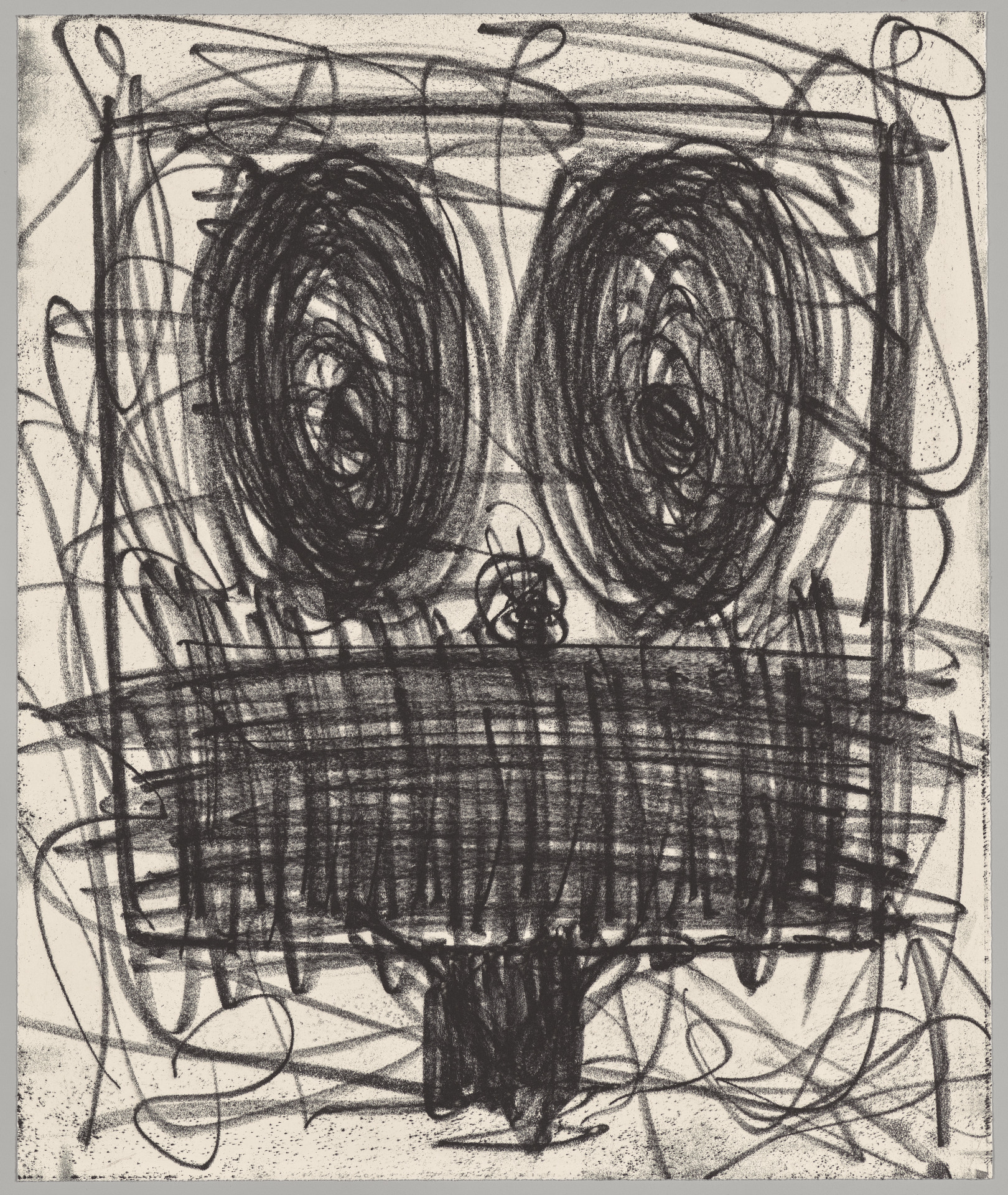
- Magazine Article
- Collection
Rashid Johnson
A set of deeply personal etchings explore the artist's own anxiety and in turn speak more broadly to the experience of Black men in America

A series of three etchings by the Chicago-based artist Rashid Johnson, Untitled Anxious Man (2018), Untitled Anxious Crowd (2018), and Run (2018), recently entered the CMA’s collection. Meant to be viewed together, the prints present deeply personal subject matter that builds on the artist’s expression of personal anxiety to more generally explore the experience of being a Black man in America today.
Johnson first gained critical recognition as the youngest artist included in Freestyle, a foundational exhibition featuring a new generation of Black artists organized at the Studio Museum, Harlem, in 2001. Since then, the artist has worked in many mediums, including painting, photography, sculpture, video, installation, and performance. He also created his first film, an adaptation of Richard Wright’s 1940 novel Native Son (currently on HBO Max), which was shot in Cleveland in 2018.


Softground etchings on Somerset Velvet wove paper. Dr. Gerard and Phyllis Seltzer Fund, 2020.77–79
Invoking such varied themes as the Black experience in America, the dialogue between abstraction and figuration, and the relationship between art and personal identity, Johnson has sometimes taken a cerebral approach to questions of race and political identity. However, his “anxious men,” begun as a series of drawings in 2015, confront the viewer with visceral immediacy. Untitled Anxious Man and Untitled Anxious Crowd are dominated by an abstracted face or series of faces with large bulbous eyes, gritted teeth, and a small, tensed neck. The male subject is messy, vulnerable, and fearful, filling the frame of the white page with confrontational urgency. While Johnson’s original impulse for the series was to explore his own anxiety, he soon recognized that the project could speak more broadly to the experiences of Black men in America during a time marked by police violence and mass incarceration. In the artist’s words, “I was coming to the realization that my anxiety was not mine exclusively.”
Unquestionably, the works speak poignantly to the trauma, anger, and protest stemming from the police killings of Tamir Rice, Breonna Taylor, George Floyd, and Rayshard Brooks, among others, and the undeniable structural racism at their root. The third print, Run, which consists of the work’s title written directly onto the etching plate, captures the baffling contradictions invoked by these tragedies: while “to run” implies the primal, human flight instinct in the face of danger, in today’s context, it reminds the viewer of repeated scenarios in which an instinct of self-preservation is met with death at the hands of police. The work is one of several over the past few years in which Johnson has used this word, in some cases even combining it with imagery of a target to express this idea more explicitly.

The immediacy of the prints comes partially from Johnson’s handling of the materials of printmaking. Johnson drew with a lithographic pencil onto the waxy surface of a softground etching plate, a technique that results in the grainy, crayon-like texture of his compositions. This technique facilitated the distinctively shaky, jagged lines that convey a sense of disquiet rather than control. The repetitive marks recall Johnson’s earlier drawings of anxious men, which were made by drawing with and then scraping away from a combination of wax and African black soap. In both the prints and the drawings, the directly drawn marks and areas of inky irregularity, as well as the occasional fingerprint, register the artist’s presence. That presence is crucial in relaying the embodied nature of anxiety, sadness, and despair in Johnson’s work and counters the often reductive image of Black male identity that recurs throughout popular media today.
The museum’s purchase of these powerful prints by Rashid Johnson is part of an ongoing focus on acquisitions of modern and contemporary works on paper by artists of color as a means of diversifying both the museum’s collection and its galleries. Recent gifts and purchases for the collections of prints and drawings include major works by Belkis Ayón, Jacob Lawrence, Norman Lewis, Kerry James Marshall, Carl Pope Jr., Mavis Pusey, and John Woodrow Wilson. Johnson’s series, and these other works on paper, will be featured in upcoming exhibitions in the James and Hanna Bartlett Prints and Drawings Gallery and the contemporary galleries. Until then, they can be seen today, along with the rest of this growing part of the collection, on Collection Online.
Cleveland Art, Fall 2020
Britany Salsbury Associate Curator of Prints and Drawings